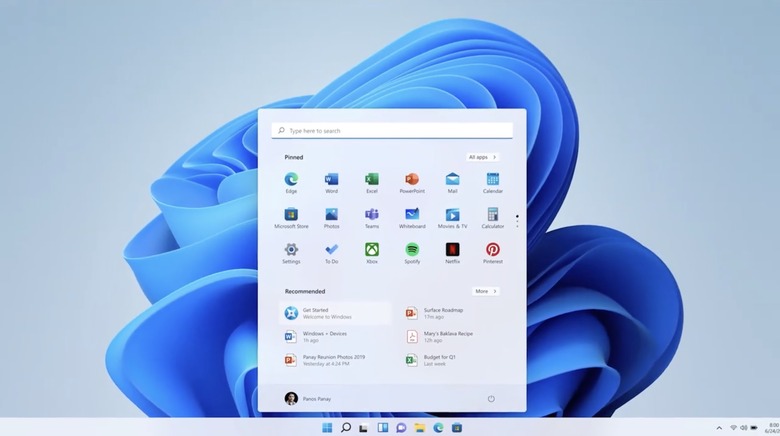Why Microsoft's Messy Windows 11 Update Is Actually Great News For Users
After plenty of teasing and various leaks, Microsoft last week unveiled the operating system upgrade we were all waiting for. Windows 11 is official, and it's more than a Windows 10 theme that's good enough to warrant a new name. Microsoft developed several new features for the Windows 10 upgrade we thought we'd never get, and you can already try Windows 11 via the Insider Preview. That's if your relatively new Windows 10 hardware can support the upgrade.
Microsoft's Windows 11 hardware requirements mess is the biggest Windows 11 controversy so far. The OS update will be available for free to Windows 10 device users. But that's only if said hardware can run Windows 11. Before you freak out that your laptop and desktop don't seem to qualify for the update, which will be available to you despite the CPU or TPM incompatibility issues you might develop, I'll explain why Microsoft's messy Windows 11 update is actually great news for everyone.
It's been a few years since Microsoft released Windows 10 to a plethora of supported devices, giving people on previous Windows releases a year to upgrade their machines to the newest operating system for free. Considering the backlash the new Windows 11 hardware requirements is getting, people must have forgotten how annoying Microsoft was about the Windows 10 update.
The Redmond-based giant fixed the obnoxious Windows 8 release, gave you Windows 10 for free, and then told you that you had a year to claim the free upgrade. You could choose to upgrade whenever you wanted to do it. If you wished to try Windows 10. It was up to you, the user.
But in reality, Microsoft forced Windows 10 on many, many people. That turned out to be a bigger headache than Windows 11 hardware requirements will ever be. People found their devices upgraded to Windows 10 on their own accord, breaking things in the process, and raking up data overages. I can't think of anything worse than having a Windows update ruin your day. Or week. Wait, unless I can.
Microsoft wanted Windows 10 to take off. It needed the market share numbers. And it eventually learned to cut it out with the forced upgrades, although some people might still complain online.
Rather than find yourself in a position where Windows 11 is forced on you before you're ready, you should be happy to deal with unclear and seemingly illogical hardware requirements. You know at least that you'll update to Windows 11 when you feel like it. You'll be able to back up all your sensitive information, and ensure that you download the update over a dependable connection. You'll then finish the installation at your convenience.
That's not to say that the Windows 11 hardware requirements issue isn't annoying. Because it is, and Microsoft is just starting to explain it. The fact that Microsoft just released a blog titled Update on Windows 11 minimum system requirements indicates that it has heard customers. Many will want to jump to Windows 11 as fast as possible. Many will want to test the OS in beta, and many people might not even mind the previous forced update.
But things will hopefully get better, and Microsoft will iron out the issues related to Windows 11 hardware requirements.
In a worst-case scenario, you'll have to buy a brand new PC that supports Windows 11 fully. If it comes to that, it's still something everyone should consider. Microsoft explains that the Windows 11 minimum system requirements are supposed to guarantee the complete OS experience. The company cites three principles that guided its hardware requirements decisions: Security, reliability, and compatibility.
Marketing aside, it's really that first principle that should have you very excited about Windows 11. Microsoft wants to make Windows 11 more secure than ever. For that to happen, it needs to ensure that the CPU powering your machine can support TPM 2.0 or Trusted Computing Group 2.0.
You can read Microsoft's full blog about the controversial Windows 11 system requirements at this link. This Microsoft support page offers more details about the actual minimum system requirements for the company's newest operating system update
